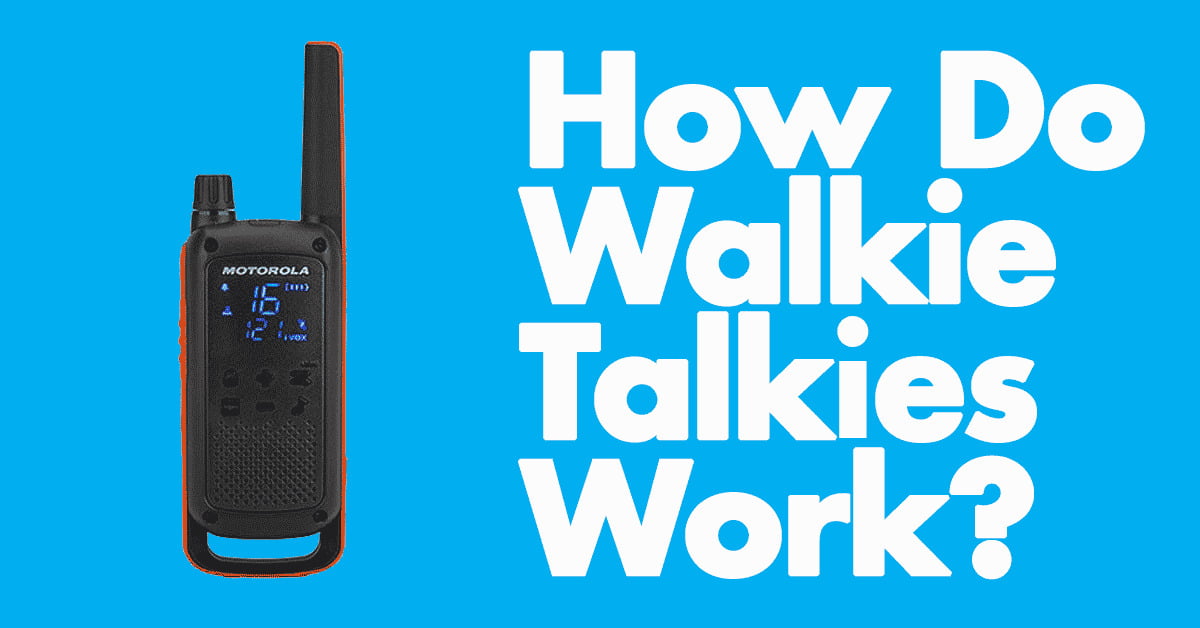
The progress of cell phone technology is incredibly rapid. However, cell phones still rely on a network of nearby cellular towers and become useless without them. In contrast, walkie-talkies offer a solution for short-range wireless communication in areas where cell phone reception is poor. Walkie-talkies are compact, handheld radios that resemble cordless phone handsets. They consist of a microphone, speaker, and antenna. Unlike phones, the speaker and microphone of a walkie-talkie are positioned closely together, with a louder speaker to ensure the conversation is audible to everyone nearby.
Walkie-talkies are battery-powered transceivers, capable of both sending and receiving radio messages. They operate on a half-duplex channel, allowing only one walkie-talkie to transmit at a time, although multiple devices can receive the same signal. Unlike phones that enable continuous back-and-forth communication, walkie-talkies employ a push-to-talk (PTT) system. This means you must press a button to speak and release it to listen to sound from other units. This simplicity and speed of use, without the need to dial a number, make walkie-talkies convenient.
One of the key advantages of walkie-talkies is their independence from unreliable cell phone signals. They can transmit directly to each other, enabling communication even during natural disasters or power outages when cell networks fail. Designed primarily for short-range communication within a few miles, walkie-talkies are widely used in businesses to facilitate efficient communication among employees in various indoor and outdoor environments. Wilderness enthusiasts also rely on walkie-talkies to stay connected during hiking or hunting trips in areas with no cell phone coverage. Additionally, walkie-talkie technology is utilized in one-way baby monitors, providing parents with the ability to monitor their children's activities.
A Walkie's Inner Workings
All walkie-talkies consist of essential components such as a speaker, microphone, battery, antenna, circuitry, and the iconic push-to-talk (PTT) button. These parts work together to generate radio signals. Imagine you're whitewater rafting with friends in a remote area devoid of cell phone coverage. By pressing the PTT button on your walkie-talkie, you can communicate with your group. As you speak, the walkie-talkie converts your voice into radio signals, which are electromagnetic waves that travel at the speed of light to other radios within range and on the same channel.
Radios operate on various frequencies within the electromagnetic spectrum, denoted in Hertz (cycles per second), such as kilohertz (KHz) and megahertz (MHz). Modern digital walkie-talkies may have multiple channels or frequency bands, requiring all users to be on the same channel to communicate effectively. In the United States, public walkie-talkies primarily utilize frequencies known as Family Radio Service (FRS) and General Mobile Radio Service (GMRS), which fall within the 460-MHz range. Additionally, the government designates frequencies for corporate use, known as Business Band, ranging from 450 to 470 MHz.
Given the limited availability of frequencies, the airwaves can become congested, leading to interference when too many signals are present simultaneously. To mitigate this, walkie-talkies often include features to filter out unwanted signals. However, radio signals can still behave unpredictably due to weather or electromagnetic anomalies, occasionally causing inadvertent reception of other signals. An example of this is the incident in West Virginia, where a baby monitor picked up foul language from truckers using CB radios.
Understanding the basics of radio technology is crucial, so if you're unfamiliar, it's recommended to explore How Radio Works. Despite occasional challenges, walkie-talkies remain reliable tools for wireless communication in various scenarios.

